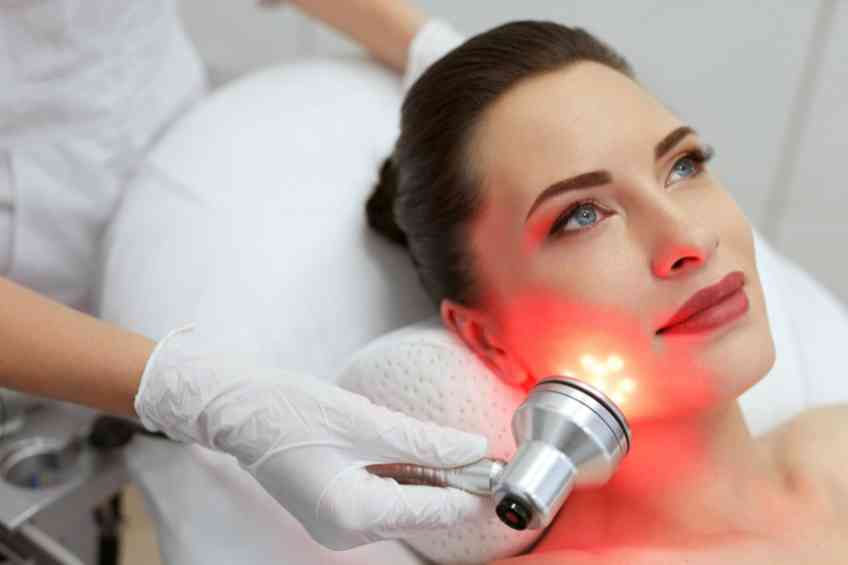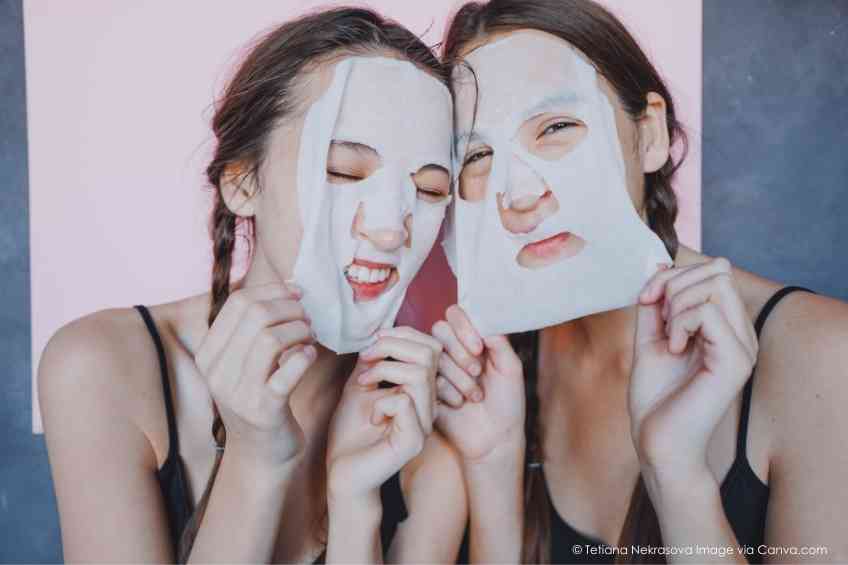The Skinny:
There are a lot of people who get all hot and bothered by the purported benefits of red light therapy, which forgive the pun, has become a pretty hot topic of late. But the funny thing about “photomedicine” is that it isn’t new. It has been applied for more than 2,000 years. Today’s red light therapy covers a therapeutic technique that involves low-level wavelengths of red light to treat all sorts of skin conditions—psoriasis, scars, acne, stretch marks, wrinkles, inflammation and edema. It is also believed to help fight macular degeneration and kill fungi. If that’s not enough, others claim it can treat diabetes, thyroid malfunction, cancers and infection, while also supporting hair growth, weight loss, body sculpting, anxiety relief and pain reduction. Not surprisingly, for all its support, these sorts of beneficial claims bring out a lot of skeptics. Ultimately, there may be some cause for concern when it comes to red light therapy. Yes, research indicates that it can help with a number of conditions. But the treatment is also susceptible to, well, quacks that offer up related products and beneficial claims that just don’t measure up. Read on for some insights.
The Slate:
A Definition
Red light therapy, also known as “photobiomodulation,” uses pulsed or static red light from heat lamps, lasers and light-emitting diodes to enhance cell function and repair damaged tissue. If used with photosensitizing chemicals, it is also thought to be able to destroy unwanted cells. It’s an amazing and admittedly confusing twist, there are over 60 different names for the treatment including low-level light therapy, soft laser therapy, cold laser therapy, biostimulation, photonic stimulation, phototherapy, non-thermal LED light and low-power laser therapy.
A Mixed Reputation
More than a century ago, a Danish physician actually won a Nobel prize for his work on red light therapy’s healing properties. Yet the treatment’s reputation has suffered at times since then, especially in the early 20th Century, from shoddy and conflicting research and unscrupulous or uninformed practitioners. The therapy’s standing has also been harmed by its different names—more than 60—and the approach by some practitioners to mix this therapy with other light frequencies—which can and has produced messy results.
Helps Skin But Not Perfect
Many reputable scientists acknowledge red light’s impact on skin health thanks to its effect on mitochondrial chromophores, which stimulate collagen production and smooth and rejuvenate skin. It can also increase circulation, decrease redness and inflammation and treat conditions such as acne, hyperpigmentation and psoriasis. But it is not a miracle cure, notes Doctor of Nursing Practice Jodi LoGerfo. “They aren’t a game changer when it comes to fine lines, wrinkles and hair loss, etc.,” she warned. In addition, it may take multiple therapy sessions over weeks or months to see any results.
Eliminates Unwanted Tissue
Red light therapy is basically safe on its own. However, when paired with photosensitizing drugs the combined impact can destroy cells. This approach is heralded as a noninvasive outpatient medical treatment that can be repeated with no side effects, clearing the way for it to deal effectively with psoriasis, actinic keratosis, vitiligo, acne and warts. The Cleveland Clinic also notes that this emerging therapy also holds the promise to battle urinary tract infections, acute sinusitis, gastritis, corneal infections, gum disease and potentially some cancers.
Limited Research
The supporting research on red light therapy has often been handicapped by small samples, inadequate controls, placebo effects and even bias from researchers with a vested interest. This is especially true when it comes to claims that the therapy aids dramatic hair regrowth, repairs muscles, thwarts cancer and cures mood disorders. There is somewhat better, although still limited evidence, that red light has the ability to reduce chemotherapy’s side effects and reduce pain. All of this still pales in comparison to stronger research support on its effectiveness for treating minor skin ailments, macular degeneration and edema.
Regulations
The therapy’s related products are set into four regulated classes of “medical devices” by the Food and Drug Administration (FDA). Class 1 (no medical claims, low risk) and Class 2 (medical claims, moderate risk) devices can be purchased and used by anyone for cosmetic purposes. There are limitations for devices in the Class 3 (invasive) and Class 4 (high risk—including laser and Intense Pulsed Light devices) categories. These are seen as potentially dangerous and therefore can only be used by licensed professionals with appropriate credentials.
Home-Use Device Considerations
Since multiple therapy sessions are often required, it may be less expensive and more convenient to purchase a red light therapy home-use device. It is important, however, to stay with FDA-approved devices. These Class 1 and 2 devices range from full-body or picture-sized lights to tiny wands with extra heat or massage features. Higher power devices work faster. But don’t confuse wattage (energy consumption) with power (irradiance, measured in milliwatts/cm2.) Wavelengths of 633nm penetrate less deeply than those in the near-infrared 850nm range.
Red Flags
Don’t be fooled by non-medical personnel offering medical-grade treatments or unrealistic results. Make sure to ask what frequency (i.e., color) light is used. Red light therapy may be generally safe by itself, but if it is improperly mixed with other wavelengths (like ultraviolet), patients can be burned. Make sure to use eye protection, guard against falling asleep under the lights and don’t exceed recommended times.
Eyes Up:
Are you a red light therapy convert? Tell us why at info@wellwellusa.com.
WellWell editors independently identify services and products of interest. If readers purchase anything through the associated links, WellWell may earn a commission, which goes to support our work. Learn More.













